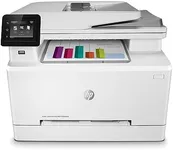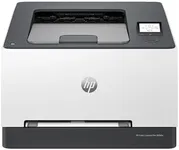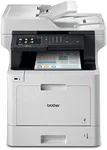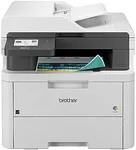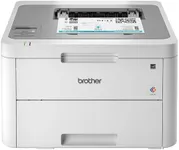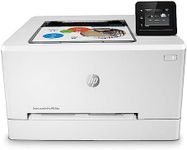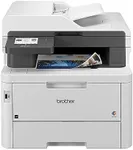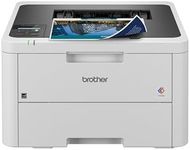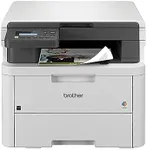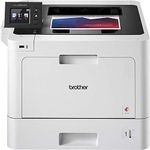Buying Guide for the Best Colour Laser Printer
Choosing the right colour laser printer can be a daunting task, but with the right knowledge, you can find the perfect fit for your needs. Colour laser printers are known for their speed, efficiency, and high-quality prints, making them ideal for both home and office use. When selecting a colour laser printer, it's important to consider several key specifications that will impact the printer's performance and suitability for your specific requirements.Print SpeedPrint speed, measured in pages per minute (ppm), indicates how quickly a printer can produce documents. This spec is important because it affects productivity, especially in environments where large volumes of printing are required. Printers with speeds of 20-30 ppm are suitable for home use or small offices, while those with speeds of 30-50 ppm are better for medium-sized offices. High-speed printers with over 50 ppm are ideal for large offices with heavy printing demands. Consider your typical print volume and choose a printer with a speed that matches your needs.
Print QualityPrint quality is determined by the printer's resolution, measured in dots per inch (dpi). Higher dpi values result in sharper and more detailed prints. For general office documents, a resolution of 600 x 600 dpi is usually sufficient. For high-quality graphics and images, look for printers with resolutions of 1200 x 1200 dpi or higher. If you frequently print marketing materials, photos, or detailed graphics, prioritize higher print quality.
Duty CycleThe duty cycle is the maximum number of pages a printer can handle per month without experiencing wear and tear. This spec is crucial for understanding the printer's durability and suitability for your workload. Light-duty printers have a duty cycle of up to 10,000 pages per month, suitable for home use or small offices. Medium-duty printers handle 10,000-50,000 pages, ideal for medium-sized offices. Heavy-duty printers with duty cycles over 50,000 pages are best for large offices with high print volumes. Assess your monthly print volume to choose a printer with an appropriate duty cycle.
Connectivity OptionsConnectivity options determine how you can connect to and use the printer. Common options include USB, Ethernet, Wi-Fi, and mobile printing capabilities. USB connections are straightforward and reliable for single-user setups. Ethernet is ideal for networked office environments. Wi-Fi allows for wireless printing from multiple devices, and mobile printing features enable printing from smartphones and tablets. Consider your connectivity needs and choose a printer that offers the necessary options for your setup.
Paper HandlingPaper handling refers to the printer's ability to manage different paper sizes, types, and capacities. This includes the input and output tray capacities, as well as support for various paper sizes and types (e.g., envelopes, labels, cardstock). For home use or small offices, a printer with a 150-250 sheet input tray is usually sufficient. Medium to large offices may require printers with larger capacities or additional trays. If you frequently print on different media types, ensure the printer supports them. Choose a printer with paper handling capabilities that match your typical print jobs.
Cost of ConsumablesThe cost of consumables, such as toner cartridges, can significantly impact the overall cost of owning a printer. It's important to consider both the initial cost of the printer and the ongoing costs of consumables. High-capacity toner cartridges may have a higher upfront cost but offer a lower cost per page, making them more economical in the long run. Look for printers with affordable and readily available consumables, and consider your print volume to estimate the total cost of ownership.
Additional FeaturesAdditional features can enhance the functionality and convenience of a printer. These may include duplex printing (automatic double-sided printing), scanning, copying, faxing, and touchscreen controls. Duplex printing saves paper and is environmentally friendly. Multifunction printers (MFPs) that include scanning, copying, and faxing are ideal for offices that need these capabilities. Touchscreen controls can simplify operation and navigation. Consider which additional features are important for your use case and choose a printer that offers them.
